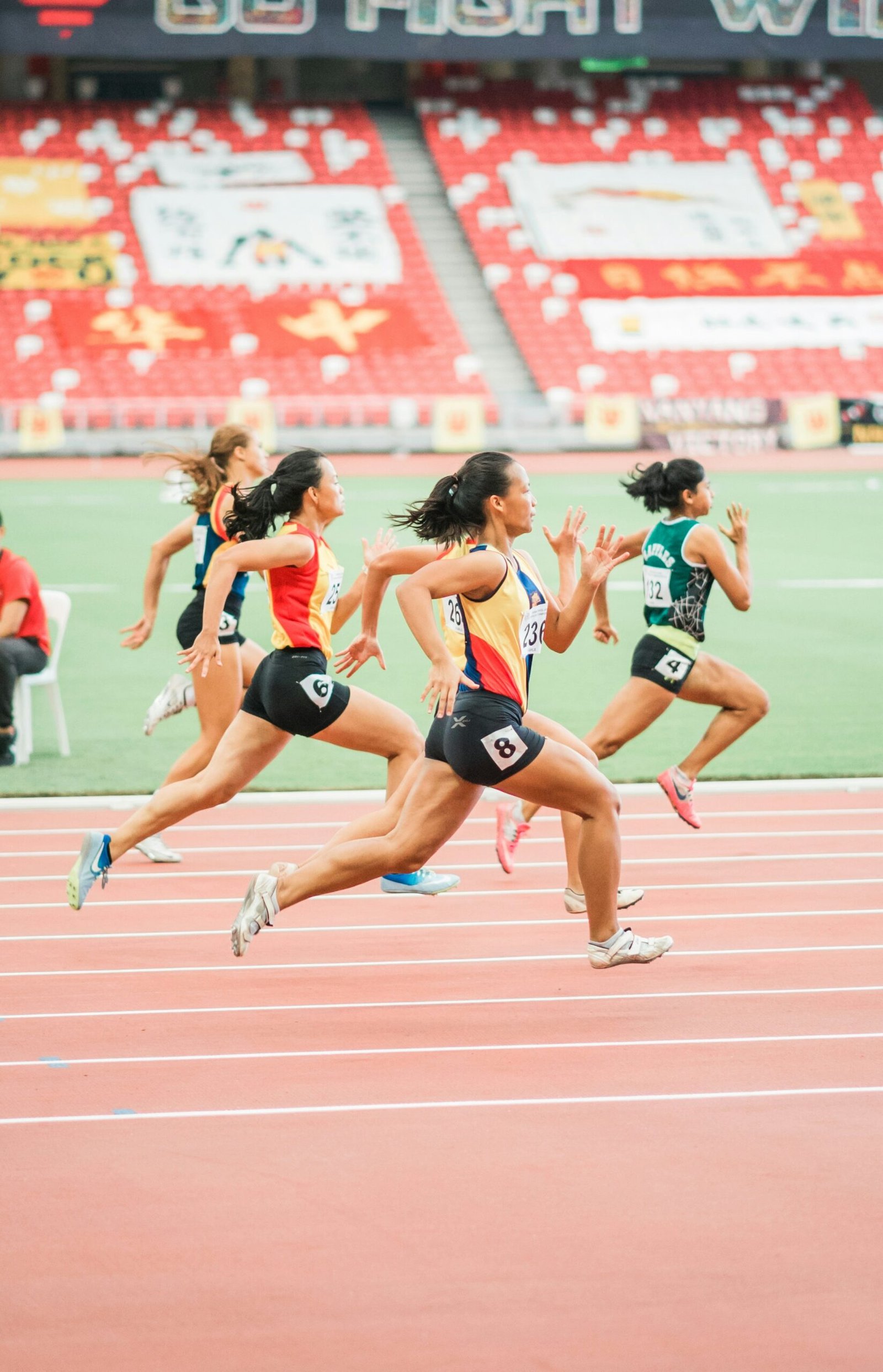
The history of Olympic gymnastics can be traced back to the ancient Olympic Games, which were held in Greece from 776 BC to 393 AD. During this time, gymnastics was considered an essential part of a well-rounded education and was practiced by both men and women. The events included in the ancient Olympic Games were quite different from what we see today. There were no specialized apparatuses, and the focus was more on overall physical fitness and strength rather than specific skills.
As the centuries passed, gymnastics continued to be practiced, but it wasn’t until the late 19th century that it began to take on a more modern form. In 1881, the International Gymnastics Federation (FIG) was established, providing a governing body for the sport. This allowed for the standardization of rules and regulations, as well as the development of new apparatuses and techniques.
The first modern Olympic Games were held in Athens, Greece, in 1896, and gymnastics was included as one of the featured sports. The gymnastics events consisted of men’s individual all-around, team all-around, and individual apparatus competitions. Women’s gymnastics was not included in the Olympic program until the 1928 Games in Amsterdam.
Over the years, Olympic gymnastics has continued to evolve and push the boundaries of what is possible. New skills and techniques have been developed, and the sport has become increasingly competitive. Today, Olympic gymnastics consists of both artistic and rhythmic gymnastics.
Artistic gymnastics is the most well-known and popular form of gymnastics in the Olympic Games. It includes events for both men and women, such as the floor exercise, vault, balance beam, and uneven bars. Athletes perform a series of intricate and acrobatic routines, showcasing their strength, flexibility, and artistic flair.
Rhythmic gymnastics, on the other hand, is a more recent addition to the Olympic program. It is a combination of gymnastics, dance, and ballet, and is performed with various apparatuses, including a hoop, ball, clubs, and ribbon. Rhythmic gymnastics is a highly technical and visually stunning sport, requiring athletes to demonstrate exceptional coordination, flexibility, and musicality.
Throughout its history, Olympic gymnastics has produced many legendary athletes who have captivated audiences with their incredible performances. Names like Nadia Comaneci, Olga Korbut, and Simone Biles have become synonymous with excellence in the sport. These athletes have not only achieved great success on the Olympic stage but have also inspired generations of gymnasts to push themselves to new heights.
In conclusion, the history of Olympic gymnastics is a testament to the enduring popularity and evolution of the sport. From its humble beginnings in ancient Greece to the dazzling displays of athleticism seen in the modern Olympic Games, gymnastics continues to captivate and inspire audiences around the world.
Ancient Origins
Gymnastics can be traced back to ancient Greece, where it was an integral part of physical education and military training. The ancient Greeks believed in the importance of a strong and agile body, and gymnastics was seen as a way to achieve this. The first recorded evidence of gymnastics in the ancient Olympic Games dates back to 776 BC, where it was included as one of the five events.
In the early years, gymnastics was a combination of various athletic disciplines, including running, jumping, and wrestling. Competitors would showcase their physical abilities through a series of exercises, such as running, jumping, and throwing. Over time, the sport began to focus more on the artistic elements, with athletes incorporating dance-like movements and acrobatics into their routines.
As gymnastics evolved, it became not only a physical discipline but also a form of entertainment. The Greeks held regular gymnastic exhibitions, known as “gymnasia,” where athletes would perform their routines in front of an audience. These exhibitions were not only a display of physical prowess but also a celebration of the human body’s beauty and grace.
During the Roman Empire, gymnastics continued to be an important part of physical education. The Romans, like the Greeks, recognized the value of a strong and healthy body. They believed that gymnastics not only improved physical fitness but also instilled discipline and character in individuals. Gymnastics training was mandatory for Roman soldiers, as it was believed to enhance their combat skills and overall effectiveness in battle.
However, with the fall of the Roman Empire, gymnastics experienced a decline in popularity. The focus shifted away from physical education and towards other aspects of society. It wasn’t until the late 18th century that gymnastics began to regain its prominence.
In the late 18th and early 19th centuries, gymnastics saw a revival in Europe, particularly in Germany and Sweden. Pioneers such as Friedrich Ludwig Jahn in Germany and Pehr Henrik Ling in Sweden played significant roles in the development of modern gymnastics. They introduced new training methods and apparatus, such as the parallel bars, horizontal bar, and pommel horse, which are still used in gymnastics today.
The 19th century also saw the establishment of gymnastics as a competitive sport. The first gymnastics competition was held in 1811 in Germany, and it marked the beginning of a new era for the sport. Gymnasts from different countries started to compete against each other, showcasing their skills and techniques.
Over the years, gymnastics continued to evolve and grow in popularity. It became an official Olympic sport in 1896, and since then, it has become one of the most highly anticipated events in the Games. Today, gymnastics is practiced and enjoyed by millions of people around the world, from recreational enthusiasts to elite athletes competing at the highest level.
The Modern Olympic Games
Gymnastics made its official debut in the modern Olympic Games in 1896 in Athens, Greece. Initially, only male gymnasts were allowed to compete, but women’s gymnastics was introduced in 1928. Since then, gymnastics has become one of the most popular and highly anticipated events in the Olympic Games. The inclusion of gymnastics in the Olympics has not only provided a platform for athletes to showcase their incredible skills and abilities but has also played a significant role in shaping the sport itself.
Today, Olympic gymnastics consists of two main disciplines: artistic gymnastics and rhythmic gymnastics. Artistic gymnastics includes both men’s and women’s events and showcases a wide range of skills, including floor exercises, vault, uneven bars, balance beam, and parallel bars. This discipline requires a combination of strength, flexibility, agility, and grace, as gymnasts perform intricate routines that captivate audiences around the world. The athletes’ ability to execute gravity-defying flips, twists, and turns with precision and elegance is truly awe-inspiring.
Rhythmic gymnastics, on the other hand, is a women-only event that focuses on the use of apparatus such as hoops, balls, and ribbons. This discipline combines elements of ballet, dance, and gymnastics to create a visually stunning performance. Rhythmic gymnasts demonstrate their mastery of coordination, flexibility, and artistic expression as they manipulate the apparatus in synchronized routines. The grace and fluidity with which they move, combined with their impeccable timing and control, make rhythmic gymnastics a captivating event to watch.
Over the years, gymnastics has evolved and progressed, pushing the boundaries of what is physically possible. Athletes continue to break records, set new standards, and inspire generations to come. The Olympic Games provide a platform for gymnasts from all over the world to come together and compete at the highest level, showcasing their talent, dedication, and hard work. The sport has become a symbol of discipline, perseverance, and the pursuit of excellence.
Furthermore, the Olympic Games have also had a significant impact on the development and popularity of gymnastics outside of the competition arena. The exposure gained through the Games has led to increased participation in the sport at the grassroots level, with more and more young athletes aspiring to become gymnasts. Gymnastics clubs and training centers have seen a surge in enrollment, as children and teenagers are inspired by the incredible performances they witness during the Olympics.
In conclusion, gymnastics’ inclusion in the modern Olympic Games has elevated the sport to new heights. The combination of athleticism, artistry, and sheer determination displayed by gymnasts has captivated audiences worldwide. Whether it is the awe-inspiring routines of artistic gymnastics or the mesmerizing performances of rhythmic gymnastics, the sport continues to push boundaries and inspire generations. The Olympic Games provide a platform for gymnasts to shine, and their achievements serve as a testament to the power of human potential and the pursuit of excellence.
Evolution of Gymnastics
Over the years, gymnastics has undergone significant changes and developments. The sport has become more physically demanding, with athletes pushing the boundaries of what is possible in terms of strength, flexibility, and technique. The introduction of new skills and routines has added excitement and complexity to the sport, captivating audiences and inspiring future generations of gymnasts.
One notable development in Olympic gymnastics is the introduction of the Code of Points. This system, implemented in 2006, assigns a difficulty score to each routine based on the skills performed. Gymnasts are rewarded for executing difficult and technically demanding moves, encouraging innovation and pushing the sport to new heights.
Moreover, the evolution of gymnastics can also be seen in the advancements of equipment used in the sport. From the early days of gymnastics, where athletes performed on basic apparatus such as the pommel horse, parallel bars, and balance beam, to the modern era where specialized equipment like the vaulting table and uneven bars have been introduced, the sport has witnessed a transformation in the way athletes showcase their skills.
The introduction of the vaulting table, for example, has revolutionized the way gymnasts perform their vaults. With its springboard-like design, the vaulting table allows athletes to generate more power and height, enabling them to execute more complex and acrobatic maneuvers in the air. This advancement has not only made vaulting more exciting to watch but has also opened up new possibilities for gymnasts to push their limits and achieve higher levels of difficulty in their routines.
Similarly, the uneven bars have undergone significant changes over the years. Originally consisting of two wooden bars set at different heights, the apparatus has evolved to include fiberglass bars that provide a better grip and allow for greater swing and release movements. This has led to the development of intricate and dynamic routines, with gymnasts seamlessly transitioning between various grips, releases, and catches, showcasing their strength and precision.
Another area where gymnastics has evolved is in the artistic aspect of the sport. While technical skills and difficulty remain crucial, there is now a greater emphasis on presentation and artistry. Gymnasts are encouraged to express themselves through their routines, incorporating dance elements, music, and theatrical flair to captivate the audience and create a visually stunning performance.
The evolution of gymnastics has not only transformed the sport itself but has also had a significant impact on the athletes. Today, gymnasts are required to train harder and longer, pushing their bodies to the limit in order to compete at the highest level. The sport has become more competitive, with athletes constantly striving to outdo one another and set new records.
In conclusion, the evolution of gymnastics has been a fascinating journey, marked by advancements in skills, equipment, presentation, and the overall level of athleticism. As the sport continues to progress, it is exciting to imagine what the future holds for gymnastics and the incredible feats that gymnasts will accomplish.
One of the most unforgettable moments in Olympic gymnastics history is the performance of Simone Biles at the 2016 Rio Olympics. Biles, often regarded as one of the greatest gymnasts of all time, showcased her incredible skills and athleticism throughout the competition.
Her routine on the balance beam was particularly remarkable. Biles executed a series of gravity-defying flips and twists with flawless precision and control. The crowd was in awe as she effortlessly landed each element, displaying a level of difficulty that had never been seen before in women’s gymnastics.
But it was Biles’ floor exercise that truly stole the show. With a combination of power, grace, and artistry, she delivered a routine that left spectators and judges alike in awe. Her tumbling passes were executed with such explosive energy and precision that it seemed as though she was defying the laws of physics.
Biles’ performance at the 2016 Olympics not only earned her multiple gold medals but also solidified her status as a legend in the sport. Her incredible skills and unwavering determination have inspired countless young gymnasts around the world to push their boundaries and strive for greatness.
Another memorable moment in Olympic gymnastics history is the iconic vault by McKayla Maroney at the 2012 London Olympics. Maroney, known for her exceptional vaulting skills, was the favorite to win the gold medal in the event.
During the final, Maroney executed a breathtaking Amanar vault, a skill that involves two and a half twists in the air. Her execution was nearly flawless, with incredible height and distance. However, a small stumble on the landing cost her the gold medal, and she had to settle for the silver.
Despite not winning the gold, Maroney’s vault became one of the most talked-about moments of the Olympics. The image of her mid-air, with perfect form and a look of determination on her face, became an iconic symbol of excellence in the sport. Maroney’s vault showcased the incredible power and precision required in gymnastics and left a lasting impression on fans worldwide.
These moments, along with many others, have contributed to the rich history of Olympic gymnastics. They serve as a testament to the dedication, talent, and sheer determination of the athletes who have graced the Olympic stage. From perfect scores to unforgettable routines, Olympic gymnastics continues to captivate audiences and inspire future generations of gymnasts.
Olympic gymnastics has not only inspired individuals to pursue the sport but also has had a profound impact on the development of gymnastics as a whole. The Olympic Games serve as a platform for gymnasts to showcase their talent and compete against the best athletes from around the world. This exposure has not only increased the popularity of the sport but has also led to advancements in training techniques and equipment.
One of the most notable contributions of Olympic gymnastics to the sport is the introduction of new skills. Gymnasts constantly push the boundaries of what is possible, and the Olympic Games provide a stage for them to unveil their innovative routines. These new skills, once performed successfully in competition, often become a part of the gymnastics repertoire. For example, the Yurchenko vault, a skill first performed by Natalia Yurchenko at the 1983 World Championships, has since become a staple in women’s vaulting.
In addition to introducing new skills, Olympic gymnastics has also led to the evolution of training techniques. Coaches and gymnasts closely analyze the performances of Olympic gymnasts, looking for ways to improve and refine their own routines. This constant pursuit of perfection has resulted in the development of more efficient training methods, such as the use of video analysis, specialized conditioning programs, and sports psychology techniques.
Furthermore, the Olympic Games have spurred advancements in gymnastics equipment. From the invention of the uneven bars to the development of spring-loaded floors, the sport has benefited from innovations that have enhanced safety and performance. These advancements have not only made gymnastics more exciting to watch but have also allowed gymnasts to push their limits and achieve new heights.
Overall, the legacy of Olympic gymnastics is one of inspiration, innovation, and excellence. The sport continues to captivate audiences and inspire individuals to pursue their dreams. Whether it’s a young gymnast aspiring to compete in the Olympics or a recreational gymnast looking to improve their skills, the impact of Olympic gymnastics can be felt at every level of the sport.




